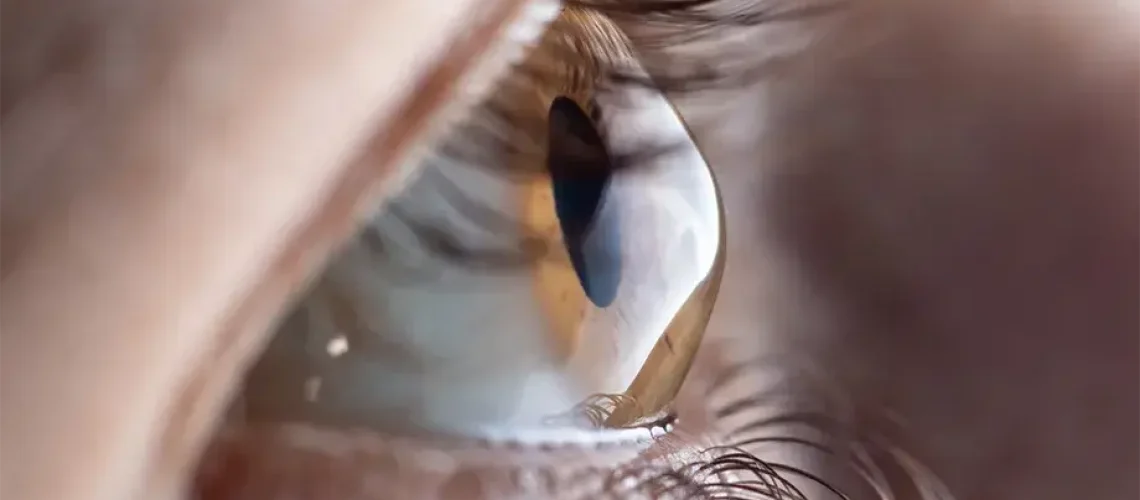Understanding Keratoconus
Corneal Cross-Linking (CXL)
Corneal cross-linking is like a superhero for your cornea. Its mission? To strengthen those weakened fibres and halt the progression of keratoconus. It’s a relatively straightforward procedure designed to keep your vision from going on a rollercoaster ride.
Think of corneal cross-linking as a molecular glue. During the procedure, your eye doctor applies a special type of vitamin B2 solution (riboflavin) to your cornea. Then, they use a UV light to activate this solution, creating bonds between collagen fibres in your cornea. It’s like giving your cornea an invisible shield to stand strong against the forces trying to warp its shape.
After a numbing eye drop, the doctor applies the riboflavin drops and lets them soak in. Then, a UV light is directed at your eye for around 30 minutes. No need to worry about pain—the numbing drops have you covered.
Post-procedure, you might experience a bit of discomfort or light sensitivity, but it’s usually short-lived. Your doctor may recommend special eye drops and sunglasses to ease any irritation. The best part? Corneal cross-linking is like hitting the pause button on keratoconus, preventing further deterioration, and keeping your vision stable.
Benefits of CXL
- Halt Progression: The primary goal is to stop keratoconus in its tracks, preventing further changes to your cornea shape.
- Reduced Dependence on Contacts: With a stabilized cornea, you may find that your prescription for glasses or contacts becomes more consistent.
- Preservation of Vision: By reinforcing your cornea, CXL helps preserve your natural vision and may reduce the need for more invasive procedures later.
Would you like to book
an appointment with our specialists?
Clearsight Eye and Laser Centre offers free laser assessments. At this appointment, you will have the opportunity to discuss any questions you may have.
If you have any questions, contact our team today on (02) 9649 5591.



